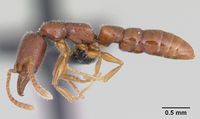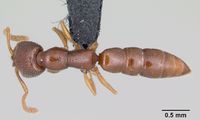Stigmatomma sakalava
| Stigmatomma sakalava | |
|---|---|

| |
| Scientific classification | |
| Kingdom: | Animalia |
| Phylum: | Arthropoda |
| Class: | Insecta |
| Order: | Hymenoptera |
| Family: | Formicidae |
| Subfamily: | Amblyoponinae |
| Tribe: | Amblyoponini |
| Genus: | Stigmatomma |
| Species group: | tsyhady |
| Species complex: | sakalava |
| Species: | S. sakalava |
| Binomial name | |
| Stigmatomma sakalava Esteves & Fisher, 2016 | |
Stigmatomma sakalava was collected in gallery forests and in dry deciduous forests. All records fall within the limits of the western and southern biomes of Madagascar (sensu Burgess et al. 2004). Specimens were distributed at elevations ranging from 30 to 300 m. All specimens, from seven collections, were recorded from sifted leaf mold and rotten wood. (Esteves and Fisher 2016)
Identification
Esteves and Fisher (2016) - A member of the sakalava complex in the tsyhady species group. Stigmatomma sakalava and Stigmatomma bolabola share the following characters: absence of genal teeth, palpal formula, single mesotibial spur, head sculpture, shape of the subpetiolar process, and presence of stout, spiniform setae on the apex of hypopygium. However, S. sakalava may be distinguished by the smooth or slightly alveolate face of its propodeal declivity, mesosoma lateral face sculpture, katepisternum shape, proportion of lamella on the basoventral margin of calcar of strigil, and distribution (it is not sympatric to any of its congeners).
Worker. With characters of the tsyhady species-group and the sakalava species-complex as described above, and the following characters (asterisks flag unique characters within the genus in the Malagasy bioregion):
1. Integument orange-brown; medium-sized ant (HL: 0.74-0.76, WL: 0.89-0.94).
2. Dorsal row of teeth of mandible tooth pairs increasing in size towards apex of mandible.
3. Flexuous filiform setae ventrally skirting baso-masticatory margin of mandible.
4. Dorsal face of the head foveate.
5. Genal teeth absent.
6. Palpal formula 4:2.
7. Dorsal face of pronotum foveolate; dorsal face of remainder mesosoma foveate; declivitous face of propodeum smooth, or weakly alveolate.
8. *Katepisternum and metapleuron mostly alveolate; lateral face of propodeum slightly costulate-weakly alveolate, or mostly alveolate.
9. Mesepisterum divided into anepisternum and katepisterunm; Katepisternum rectangular, with dorsoposterior margin angled.
10. Basoventral half of calcar of strigil lamellar.
11. Anterior face of calcar of strigil with tubiform microtrichia.
12. Single mesotibial spur covered with lanceolate microtrichia.
13. Slit-like longitudinal sulcus present on the anterodorsal face of mesobasitarsus.
14. Anterior face of posterior metatibial spur glabrous.
15. Brush of long, truncated filiform setae present on the posterior face of metatibial apex.
16. Brush of acuminate, flattened-apex setae and truncated, filiform setae present on the baso-inner face of metabasitarsus.
17. Absence of a longitudinal sulcus on metabasitarsus.
18. Subpetiolar process fin-like: ventral margin midpoint obtusely angled.
19. Presence of eight to ten stout, spiniform setae on the apex of hypopygium.
Keys including this Species
Distribution
Latitudinal Distribution Pattern
Latitudinal Range: -12.90889° to -25.00778°.
| North Temperate |
North Subtropical |
Tropical | South Subtropical |
South Temperate |
- Source: AntMaps
Distribution based on Regional Taxon Lists
Malagasy Region: Madagascar (type locality).
Distribution based on AntMaps
Distribution based on AntWeb specimens
Check data from AntWeb
Countries Occupied
| Number of countries occupied by this species based on AntWiki Regional Taxon Lists. In general, fewer countries occupied indicates a narrower range, while more countries indicates a more widespread species. |

|
Estimated Abundance
| Relative abundance based on number of AntMaps records per species (this species within the purple bar). Fewer records (to the left) indicates a less abundant/encountered species while more records (to the right) indicates more abundant/encountered species. |

|
Biology
Castes
Only known from the worker caste.
Worker
Images from AntWeb
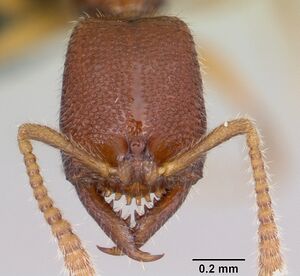   
| |
| Worker. Specimen code casent0022237. Photographer April Nobile, uploaded by California Academy of Sciences. | Owned by CAS, San Francisco, CA, USA. |
   
| |
| Worker. Specimen code casent0068192. Photographer Erin Prado, uploaded by California Academy of Sciences. | Owned by CAS, San Francisco, CA, USA. |
  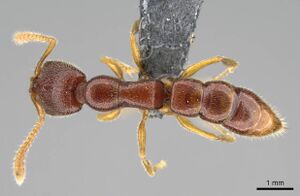    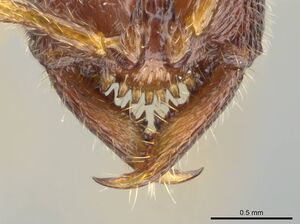 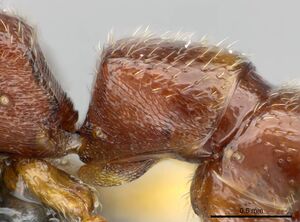  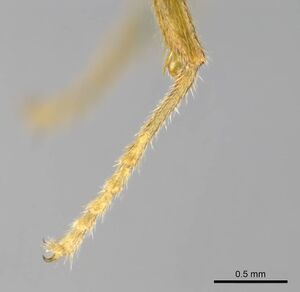  
| |
| Holotype of Stigmatomma sakalava. Worker. Specimen code casent0366766. Photographer Flavia Esteves, uploaded by California Academy of Sciences. | Owned by CAS, San Francisco, CA, USA. |
  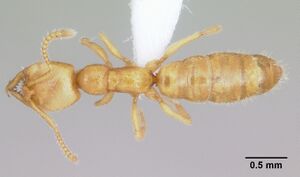    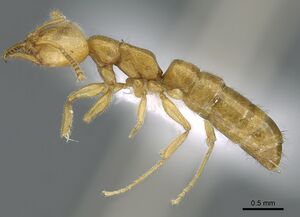   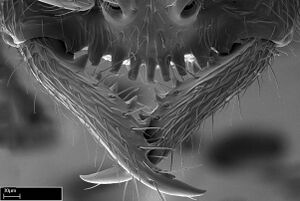 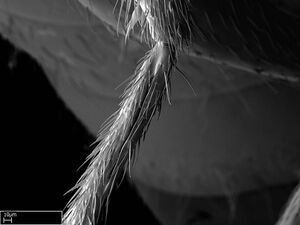 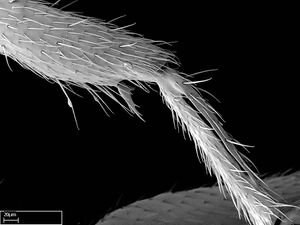     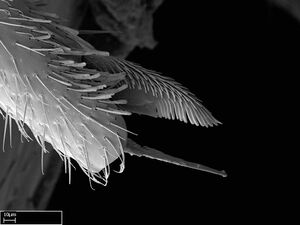   
| |
| Worker. Specimen code casent0438262. Photographer April Nobile, uploaded by California Academy of Sciences. | Owned by CAS, San Francisco, CA, USA. |
    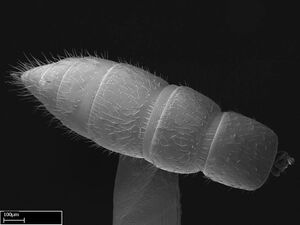        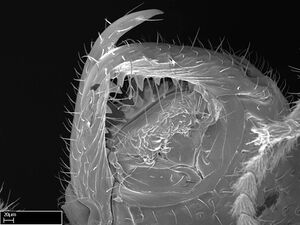     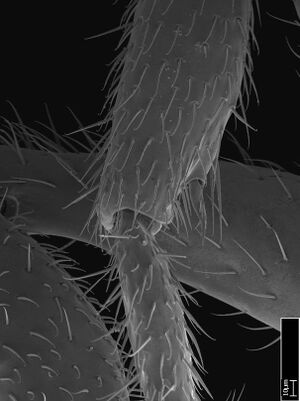 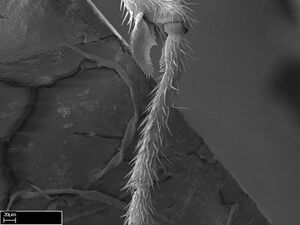 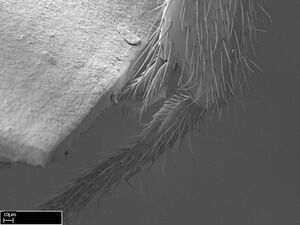
| |
| Worker. Specimen code casent0022146. Photographer Flavia Esteves, uploaded by California Academy of Sciences. | Owned by CAS, San Francisco, CA, USA. |
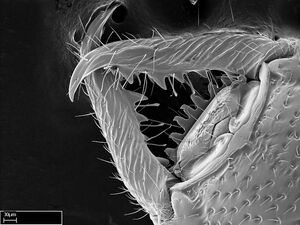  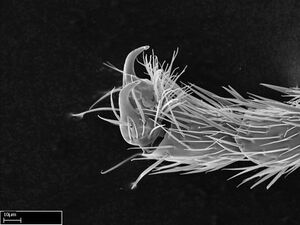    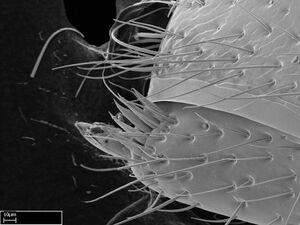
| |
| Worker. Specimen code casent0017556. Photographer April Nobile, uploaded by California Academy of Sciences. | Owned by CAS, San Francisco, CA, USA. |
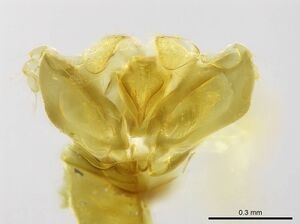
| |
| Specimen code casent0017557. . | |
Nomenclature
The following information is derived from Barry Bolton's Online Catalogue of the Ants of the World.
- sakalava. Stigmatomma sakalava Esteves & Fisher, 2016: 159, figs. 88-100 (w.) MADAGASCAR.
- Type-material: holotype worker, 5 paratype workers.
- Type-locality: holotype Madagascar: Antsiranana, Ampasindava, Andranomatavy Forest, 275 m., -13.6648, 47.98702±500 m., 6.x.2013, BLF31671, CASENT0366766, disturbed dry forest, sifted litter (B.L. Fisher, et al.); paratypes with same data but CASENT000366764, -765, and 0318441 to -443.
- Type-depositories: CASC (holotype); BMNH, CASC, MHNG, NHMB (paratypes).
- Distribution: Madagascar.
Unless otherwise noted the text for the remainder of this section is reported from the publication that includes the original description.
Description
Worker
(holotype values within parentheses): HL: 0.74-0.76 (0.76); HW: 0.58-0.61 (0.61); HW2: 0.51-0.57 (0.55); SL: 0.42-0.47 (0.45); ML: 0.44-0.52 (0.46); WL: 0.89-0.94 (0.94); PPW: 0.32-0.36 (0.35); PtL: 0.31-0.36 (0.35); PtW: 0.38-0.44 (0.44); CI: 77-83 (80); SI: 57-62 (60); MI: 58-68 (61); PtI: 80-84 (81).
Head: Mandibular baso-masticatory margin skirted dorsally by row of filiform setae; ventrally, by row of acuminate flattened-apex setae followed by parallel row of longer filiform setae. Mandibular dentition arrangement, from base to apex: single larger tooth; smaller single tooth; four pairs of teeth (dorsal tooth row with teeth increasing in length towards mandibular apex; tooth pairs fused basally); single preapical tooth; apical tooth. Anterior clypeal margin with eight to ten tubercle-like cuticular processes arranged in a single row. All clypeal cuticular processes save the most lateral ones armed anteriorly with asymmetrical mucronate dentiform seta; most lateral processes unarmed. Central-most clypeal cuticular processes around 3x the length of associated dentiform setae. Long, filiform pair of setae on median clypeal area, posterior to the cuticular processes present on anterior margin. Pair of shorter, filiform setae on median clypeal area posterior to longer pair of setae. Clypeal median area extending between antennal sockets posteriorly as a narrow (or not so narrow) longitudinal strip; frontoclypeal sulcus acute or narrowly rounded. Supraclypeal area a round concavity. Twelve antennomeres. Genal teeth absent. Absence of compound eyes. Palpal formula: 4:2 (four maxillary, two labial).
Mesosoma: In dorsal view, mesonotum narrower than posterior remainder of mesosoma. Metanotal suture absent. Sulcus dividing mesepisternum into anepisternum and katepisternum; katepisternum somewhat rectangular, with dorsoposterior margin angled. Metathoracic spiracle slit like, with swollen margin, reduced in size, located in a shallow concavity. Propodeal spiracle round, surrounded by swollen cuticle. Face of propodeal declivity not concave.
Legs: Basoventral half of calcar of strigil lamellar. Anterior face of calcar of strigil with tubiform microtrichia; posterior face with lanceolate microtrichia. Multiple paddle-like setae on anteroventral face of protibial apex, next to calcar of strigil. Multiple paddle-like setae on anterior face of probasitarsus; row of stout setae on posterior face present or absent. Single mesotibial spur with lanceolate microtrichia. Slit-like longitudinal sulcus on anterodorsal face of mesobasitarsus. Some stout setae on inner face of mesobasitarsus. Two metatibial spurs: simple anterior spur, with lanceolate microtrichia; posterior spur pectinate. Anterior face of posterior metatibial spur glabrous; posterior face with antler-like microtrichia. Brush of long, truncated, filiform setae on posterior face of metatibial apex, next to posterior metatibial spur. Absence of a longitudinal sulcus on the metabasitarsus. Brush of setae present on the baso-inner face of the metabasitarsus, formed anteriorly by acuminate, flattened-apex setae, and posteriorly by truncated, filiform setae. Some stout setae on remainder of inner face of metabasitarsus. Arolium on pro-, meso-, and metapretarsus.
Metasoma: Petiole sessile. Ventroanterior margin of petiolar tergite anterior dorso-lateroventral carina (Ward 1990) much shorter than anterior margin of subpetiolar process, in lateral view. Ventral margin of subpetiolar process with obtuse angle at midpoint (fin-like projection). Absence of fenestra on lateral face of subpetiolar process. Petiolar proprioceptor zone a large, round concavity with few sensilla. Scrobiculate sulcus between pretergite and postergite of abdominal segment III and presclerites and postsclerites of abdominal segment IV. Presence of eight to ten stout, spiniform setae on the apex of hypopygium.
Sculpture: Dorsal face of mandible mostly costate-foveolate, except for smooth apical portion. Median clypeal area costate-scarcely foveate. Supraclypeal area smooth. Head, in dorsal view, foveate; area posterior to tentorial pit plicate. Labrum confused alveolate to imbricate apically. Pronotum foveolate dorsally; remainder of mesosoma foveate dorsally. Pronotum mostly dispersed foveolate-weakly alveolate laterally. Anepisternum dispersed costulate-weakly alveolate; katepisternum alveolate. Metapleuron alveolate-slightly costate. Lateral face of propodeum slightly costulate-weakly alveolate or mostly alveolate; declivitous face smooth, or weakly alveolate. Petiolar tergite alveolate anteroventrally and ventrolaterally, grading into foveolate/foveate dorsally; laterotergite confused imbricate/alveolate posteriorly; poststernite alveolate. Abdominal segments III, IV, V, and VI punctate/foveolate; abdominal segment VII mostly smooth.
Pilosity and color: Suberect pilosity on head, dorsal face of mesosoma, lateral face of propodeum, petiolar tergite, and abdominal segments III, IV, V, and VI. Petiolar poststernite mostly glabrous. Longer pilosity on abdominal segment VII. Body color orange-brown; appendages yellow to light orange.
Finally, excluding the specimen morph B, there is no geographic pattern in the variation exhibited by the Stigmatomma sakalava specimens we examined regarding body size, the number of dentiform setae on the clypeal anterior margin, amount of clypeus between frontal lobes, number of spiniform setae on the apex of the hypopygium, and scupture.
Type Material
Holotype: Madagascar; Antsiranana; Ampasindava, Andranomatavy Forest; 275; -13.6648; 47.98702; ±500m; 3 MaxiWinks, mixed samples; 10/06/2013; disturbed dry forest; BLF31671; sifted litter; 1w; pin; casent0366766; B. L. Fisher et al.; California Academy of Sciences. Paratypes: Same data as holotype. 2w, CASC, 1w, Naturhistorisches Museum, Basel, 1w The Natural History Museum, 1w, Musee d'Histoire Naturelle Genève.
Etymology
The Sakalava people are an ethnic group of Madagascar. They occupy the area along the western coast of the island, from Onilahy River in the south to the island of Nosy Be in the north (Feeley-Harnik 1978), overlapping a large part of the range of Stigmatomma sakalava.
Determination Clarifications
Referenced as Stigmatomma MG06 in two previous studies. Yoshimura and Fisher (2012b) used specimen CASENT00222 37, and Ward and Fisher (2016) used specimen CASENT0068192-D02.
